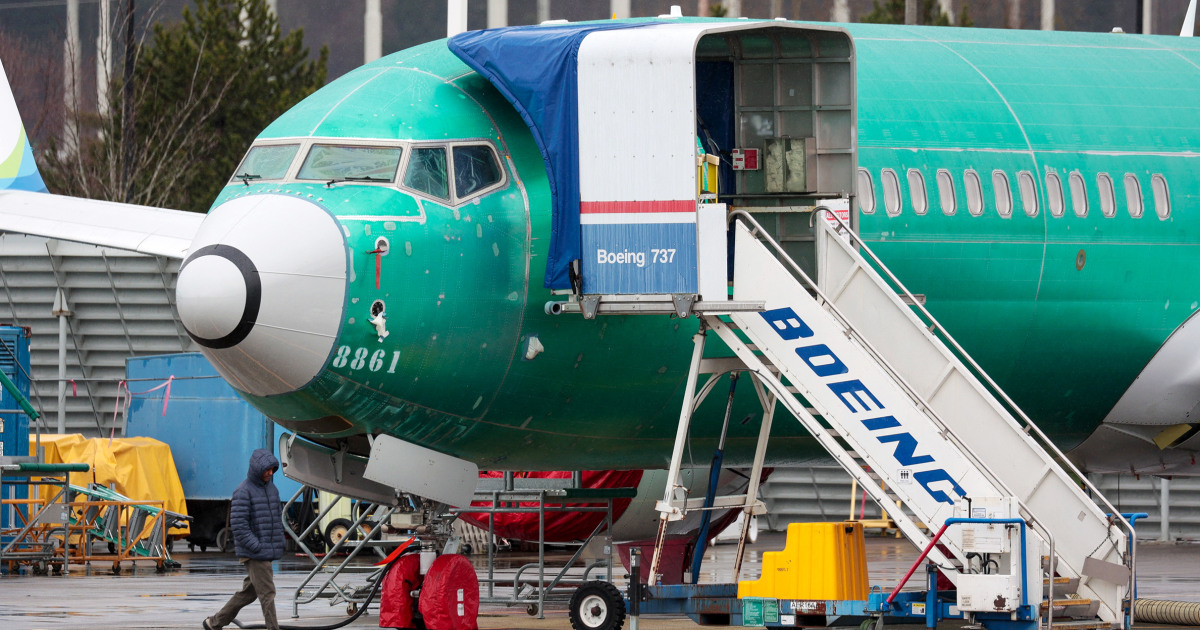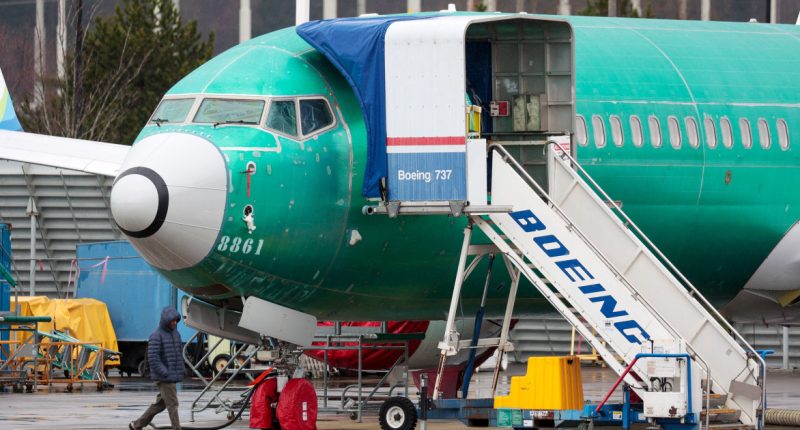
An investigation is underway into a Boeing-manufactured United Airlines plane that experienced “stuck” rudder pedals during a landing rollout last month.
Flight 1539, which had flown from Nassau, Bahamas, experienced the mishap after touching down at Newark Liberty International Airport in New Jersey on Feb. 6, according to a National Transportation Safety Board preliminary report released Thursday.
The captain of the Boeing 737-8 aircraft reported that during the landing rollout, which occurs after touchdown and before the plane slows to taxi speed, the rudder pedals did not respond to the application of foot pressure while attempting to “maintain the runway centerline,” the report said.
Instead, the pedals were “stuck” in their neutral position.
“The captain used the nose wheel steering tiller to keep the airplane near the runway centerline while slowing to a safe taxi speed before exiting the runway onto a high-speed turn-off,” the report said.
During the high-speed turnoff, the captain asked the first officer to check his rudder pedals and he reported the same issue. Shortly after that, the rudder pedals began to operate normally, the report said.
The aircraft, carrying 155 passengers and 6 crew members, was able to park safely. No one was injured.
The flight crew then notified United Airlines maintenance of the flight control malfunction and the plane was removed from service for maintenance and troubleshooting.
A review of the flight’s data recorder data corroborated the pilot’s account of what happened, and showed that the rudder surface position remained near its neutral position during the landing and rollout, even though the force inputs to the rudder pedals were increasing, the report said.
The data showed that about 30 seconds after touchdown, a “significant pedal force input was observed along with corresponding rudder surface movement. Afterward, the rudder pedals and rudder surface began moving as commanded and continued to function normally for the remainder of the taxi.”
Three days later on Feb. 9, United conducted a test flight on the event airplane at Newark, and “was able to duplicate the reported rudder system malfunction.”
The NTSB was notified about the flight control issue after the flight test and an incident investigation was opened with the involvement of the Federal Aviation Administration, Boeing and Collins Aerospace.
A post-incident inspection of the rudder control system “found no obvious malfunctions with the system.” When some rudder system components were removed, United conducted a second test flight and found that the rudder control system operated normally.
NBC News has reached out to Boeing and United Airlines for comment. The investigation is ongoing.
This marks yet another issue with Boeing’s already highly-scrutinized Max program after a Boeing-made Alaska Airlines plane door panel blew out midair over Portland, Oregon, on Jan. 5.
A preliminary investigation by the NTSB found that bolts had not been installed on that door plug.
The incident prompted the FAA to temporarily ground all Boeing 737 Max 9 airplanes operating in the U.S. and subsequently increase oversight over Boeing aircraft production.
On Monday, a Boeing 737-900 plane flown by United Airlines from Texas to Florida made an emergency landing after bright orange flames were seen shooting out of the plane’s engine.
Source: | This article originally belongs to Nbcnews.com









